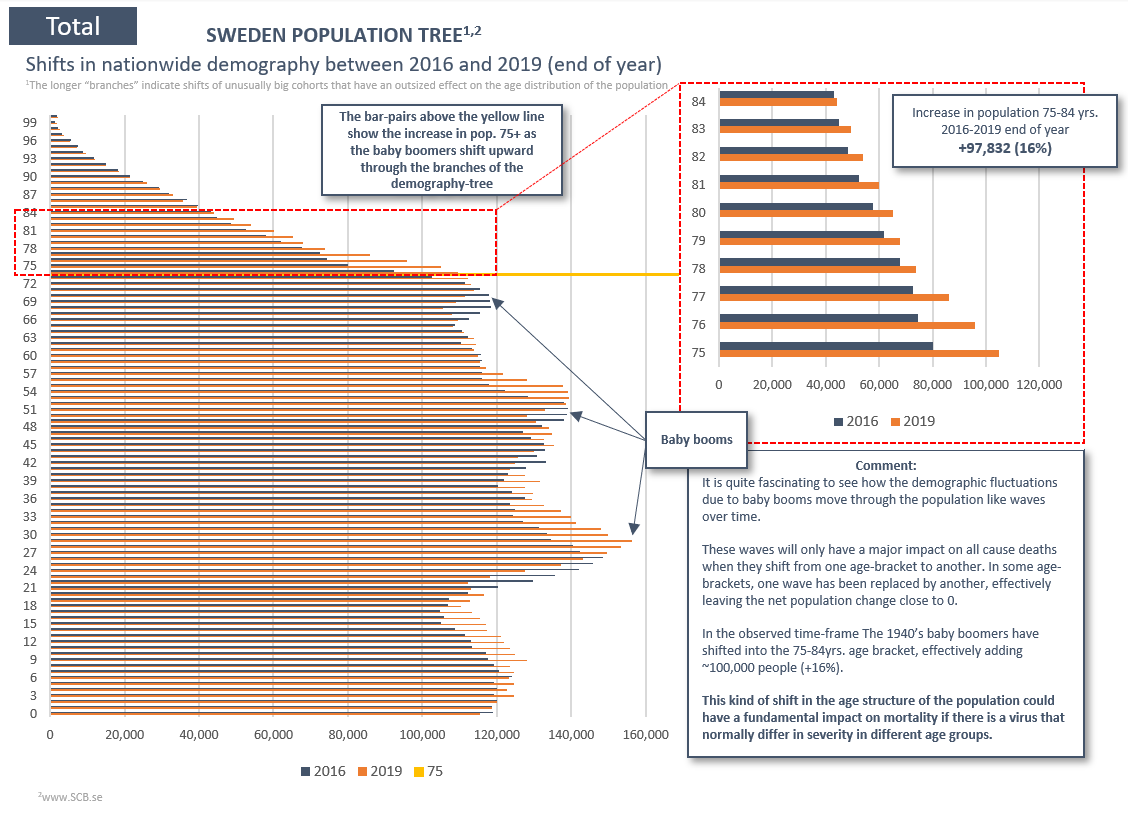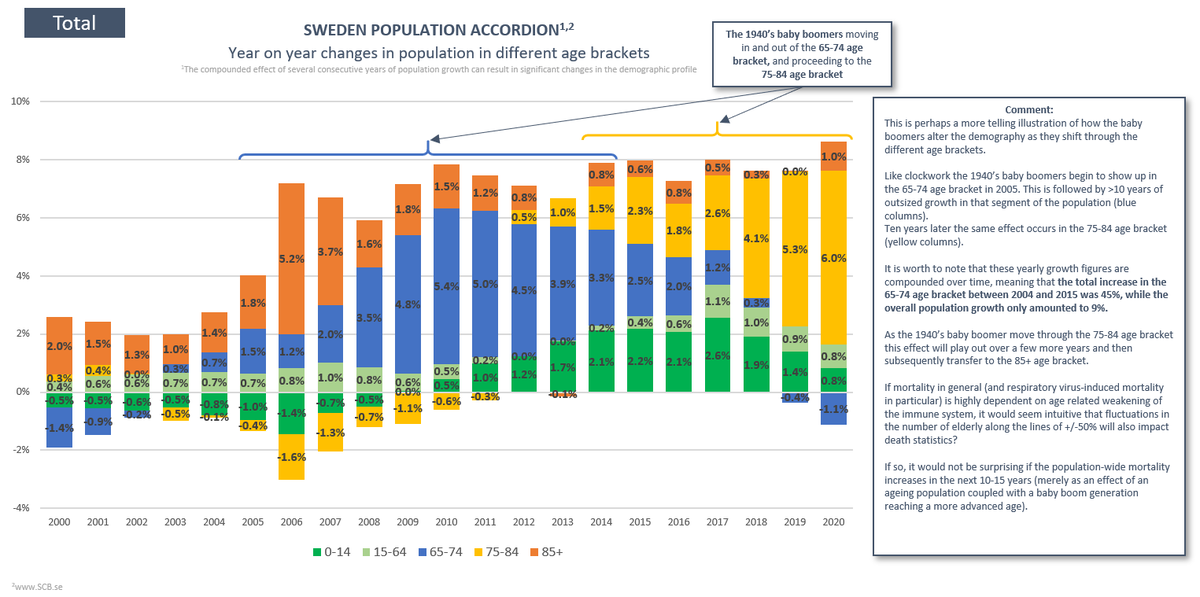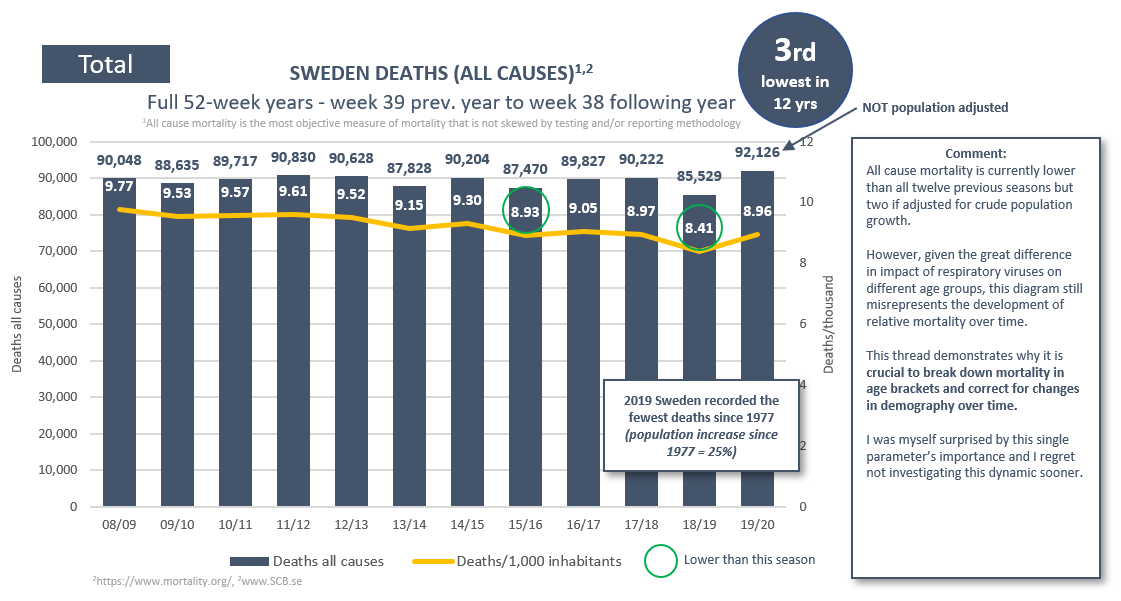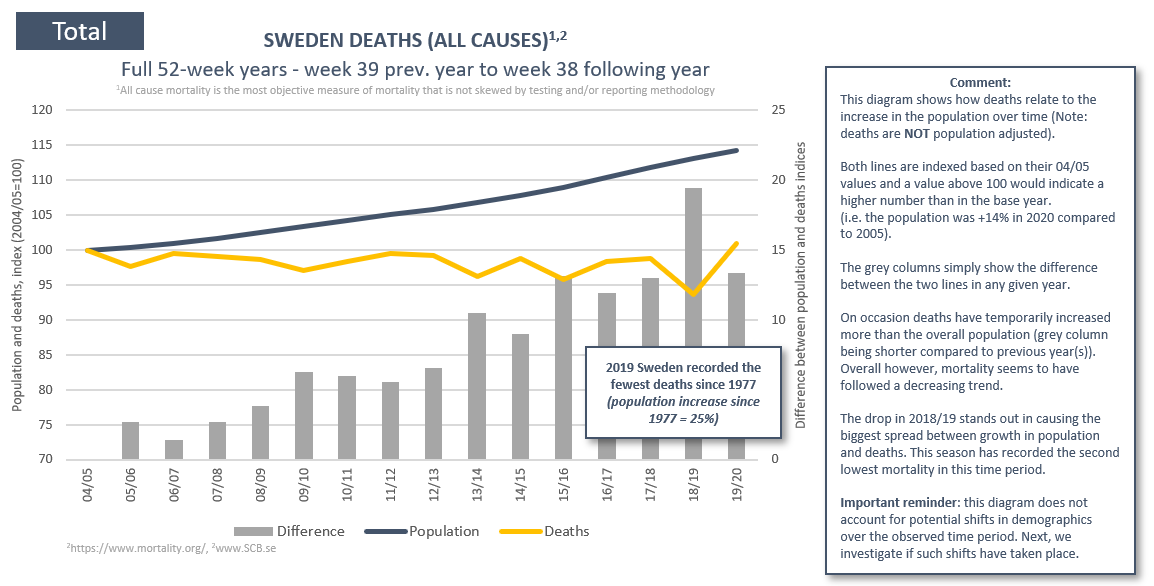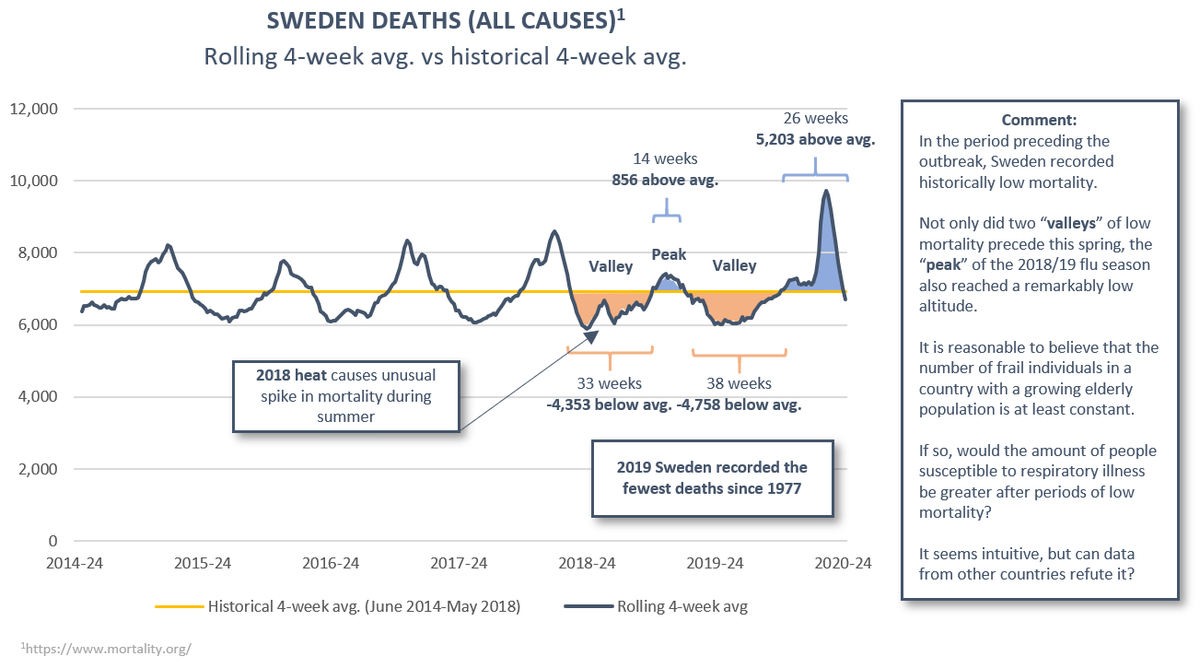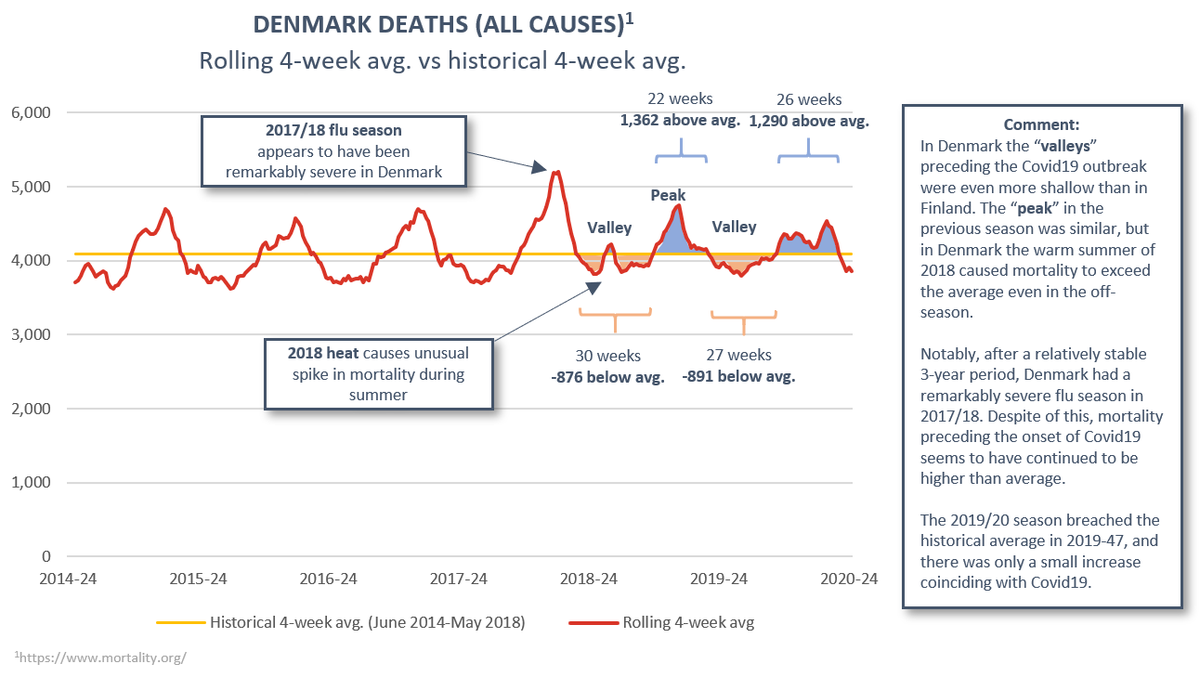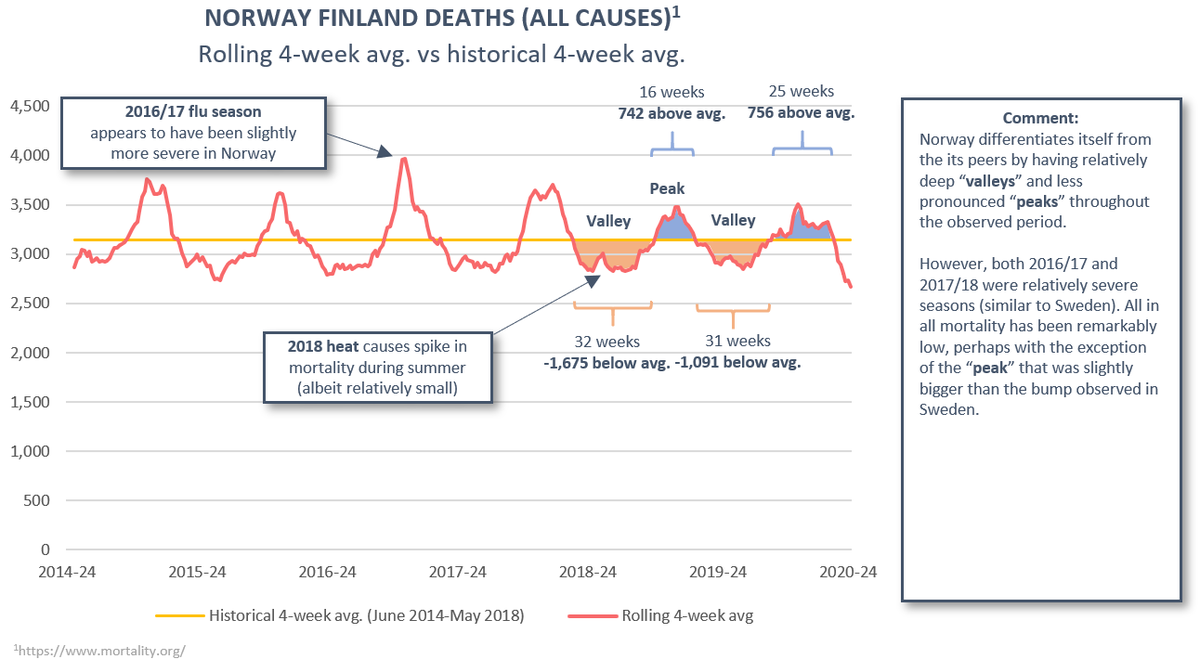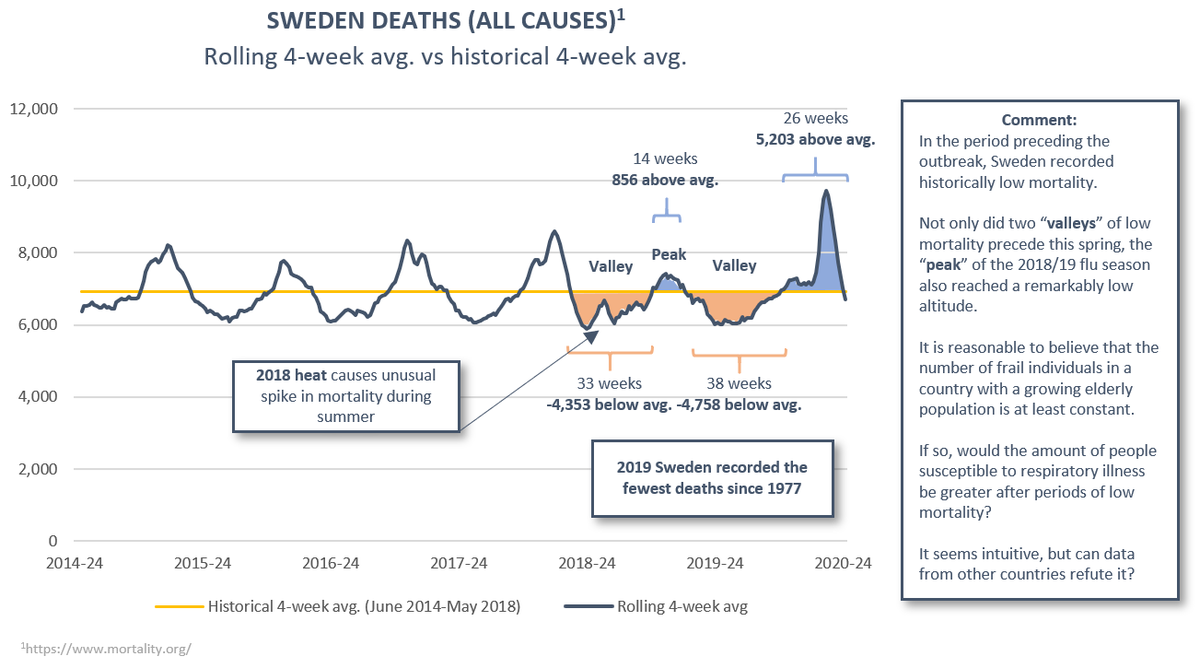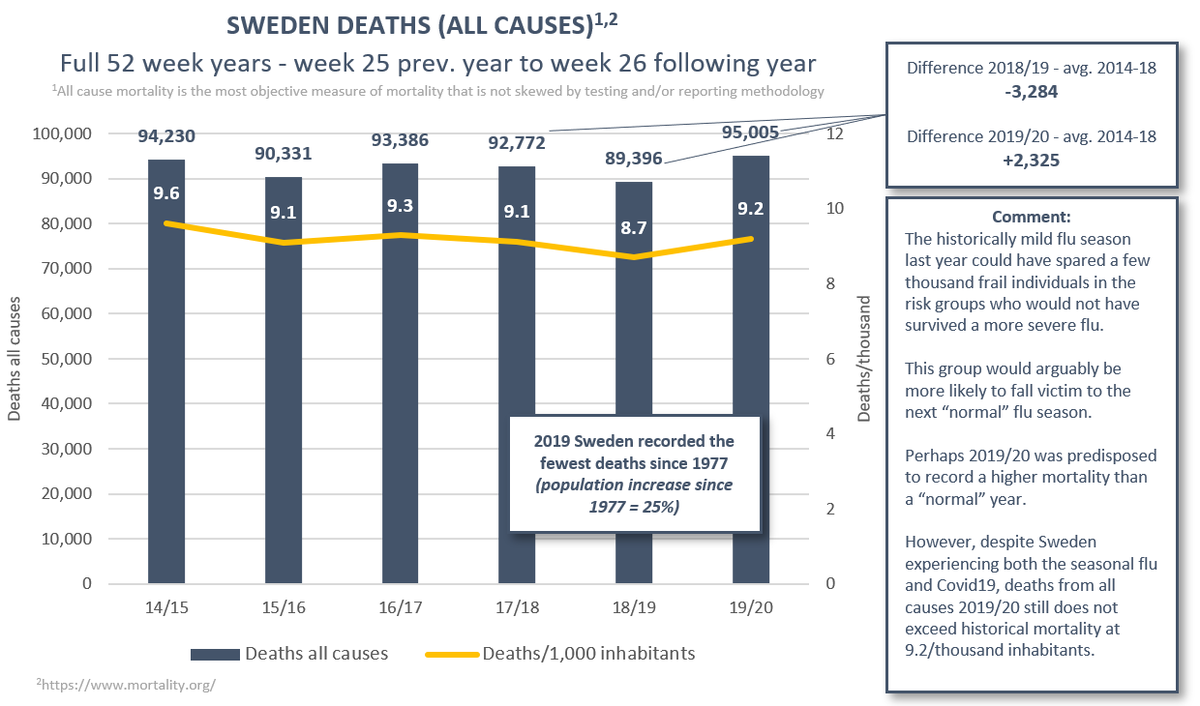
1/10 Sweden - cases, deaths & testing. A 2nd wave of PCR testing has created a 2nd wave of bad analysis of Swedish data. Influential commentators have eagerly picked up the increase in cases that has followed a ~3x increase in testing. It is time to revive some old diagrams. 





2/10 Sweden. Firstly, 20 weeks have passed since the 1st surge in cases with no subsequent increase in deaths. There was a smaller bump in cases 11 weeks ago, no increase in deaths. Cases have increases for 6 weeks straight with no noticeable effect on deaths – how can this be? 

3/10 Apart from the initial outbreak, all increases in detected cases have coincided with upped testing. This time PCR testing increased from 54k to 139k between weeks 31-41. Would we normally be surprised to find more of anything if we expand our efforts ~threefold? 

4/10 Luckily there are ways to gauge whether we find more cases due to prevalence or testing. Apparently, cases have increased far less than testing (+113% vs +159%). In fact, cases began incr. in week 36 - just prior to the week & month with the lowest positivity rate on record. 

5/10 To clarify, at a point where growth in cases itself would signal that this has been one of the most severe periods of the pandemic, finding active cases was more unlikely than ever before. Prevalence would appear to have been low.
6/10 The positivity rate has gone up for four weeks straight, but the monthly avg. remains below that of August. Nonetheless, this increase in positivity (rather than changes in absolute case counts) is something worth keeping a closer eye on in the coming weeks.
7/10 Stockholm. A remarkable increase in detected cases. So far deaths have not followed. That is not to say deaths will remain this low. Rather, if conventional knowledge of respiratory illnesses holds true, we would assume an increased severity of the virus the coming months. 

8/10 In these two diagrams we can see the disconnect between cases and deaths widening as testing was ramped up. It is also worth to reiterate that 20, 11 and 6 weeks have passed since the past three increases in detected cases occurred with no discernable effect on deaths. 



9/10 There are a lot of commentators jumping at case numbers that they hope can confirm their preconceptions. Sometimes this requires unconsciously or purposefully desisting from digging deeper into the data if it risks running counter the chosen set of beliefs.
10/10 Such a selective approach to data analysis is unfortunate. It risks impeding us from making well-informed decisions and cause unnecessary harm.
11/11 No one knows if deaths will increase in the coming weeks. But up to this point, without a doubt, there is unequivocal evidence that Covid19 deaths have never increased proportional to cases in Sweden. Claiming otherwise is ill-informed.
• • •
Missing some Tweet in this thread? You can try to
force a refresh

